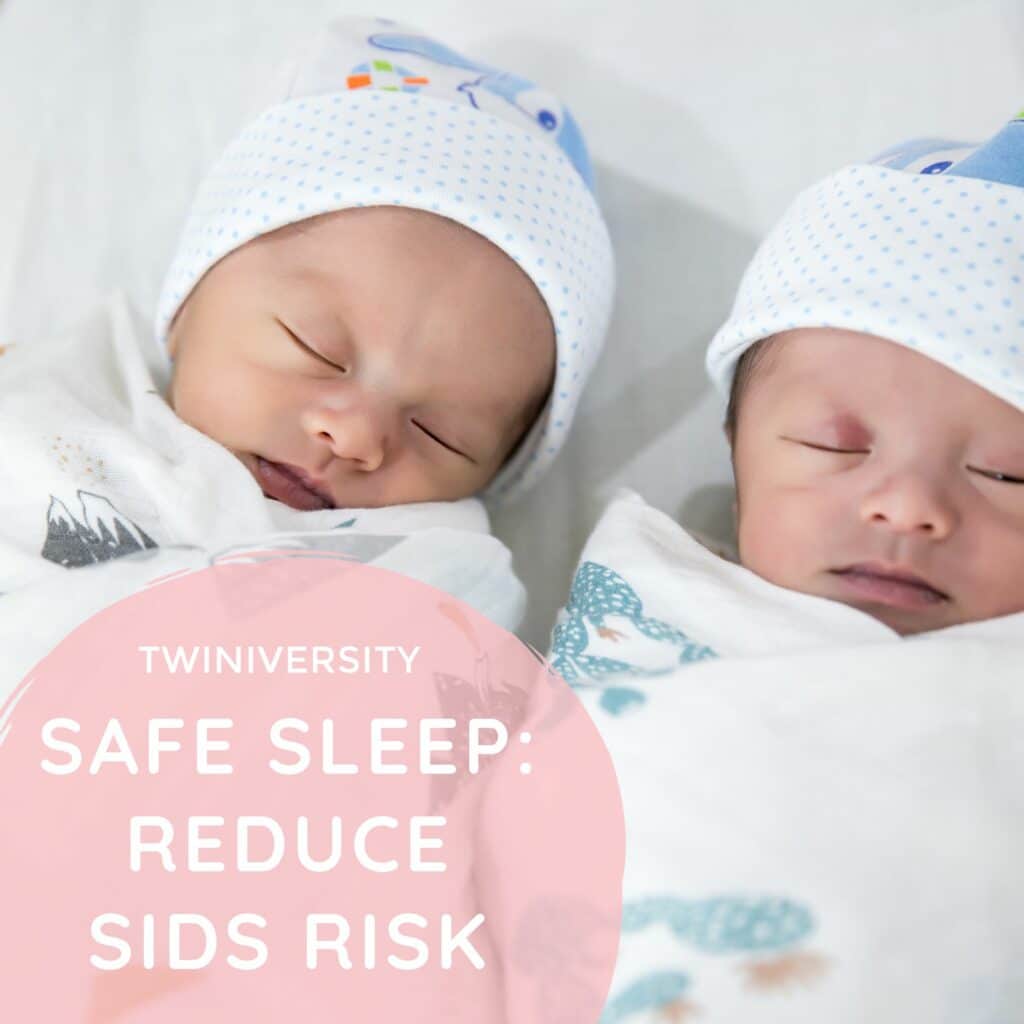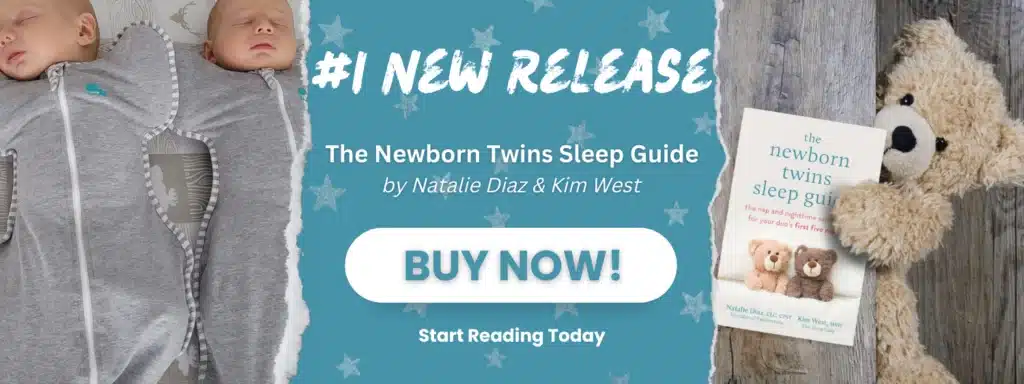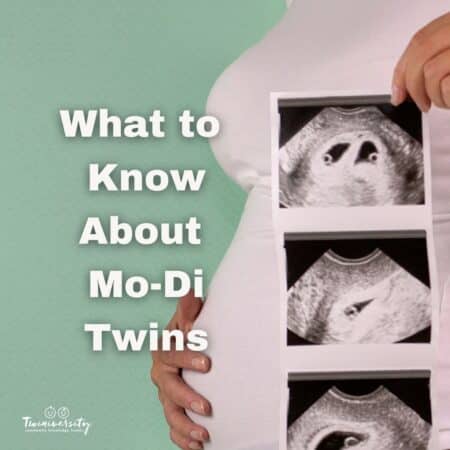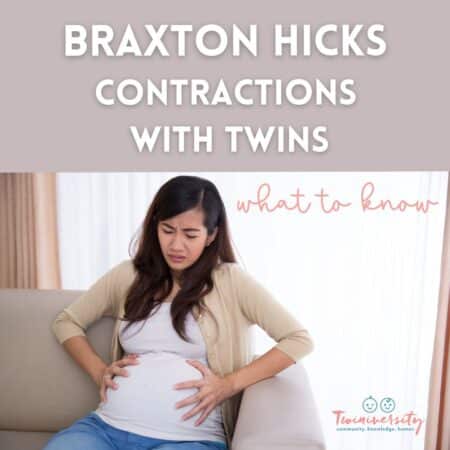Last updated on January 16th, 2024 at 04:17 pm
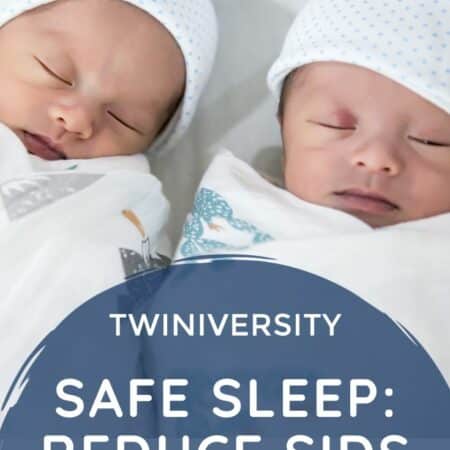
Every night, I creep into my son’s room and check to make sure that he’s still breathing. He’ll be two and a half in August, but the fear of losing him to SIDS has been with me since before he was born. It is every parent’s worst nightmare and often unexplainable, which somehow makes it that much worse. There is no disease, accident, or mistreatment to blame — it just happens.
The CDC states that SIDS (Sudden Infant Death Syndrome) occurs when an infant under one year experiences sudden death. An investigation cannot explain the cause even after completion. SUID (Sudden Unexpected Infant Death) is the unexpected death of an infant under one year, with the cause not immediately known until after an investigation. While many SUID deaths later get classified as SIDS, authorities may sometimes rule these deaths as accidental strangulation or suffocation in bed.
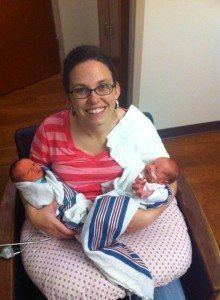
Having been through the parenting thing before, I knew all about SIDS and the risks. At every one of my son’s doctor’s appointments, my doctor reminded me about safe sleeping. The first time I saw my twin girls, born at 29 weeks, sleeping on their stomachs in the NICU, it startled me. I was reassured they were fine because they were being monitored. Still, every time they burrowed their little faces into their huggie or the monitors went off, my heart skipped a beat. Did being preemies mean the girls were at a higher risk for SIDS?
Unfortunately, the fact that the girls were born premature, weighing under three pounds, means that they are at higher risk for SIDS. Low-birthweight babies do fall into a risky category. As parents of multiples, this is a vast majority of us, even if our little ones made it to full-term.
4 Tips to Help Reduce the Risk of SIDS
SIDS is terrifying, as it has no warning and no way of stopping it. Thankfully, there are ways to help reduce the risk of SIDS.
1. Make your home and womb smoke-free
Pregnant moms who smoke are more likely to experience the loss of a baby to SIDS. As are families who smoke in the home. If you smoke, try to smoke outside of the house, away from open windows and your children. Try to change your clothes and always wash your hands before handling your babies after you’ve smoked. If you’re pregnant, speak to your doctor about safe ways to beat your cravings.

2. Back to sleep
Halo sleepsacks feature a “Back to Sleep” reminder embroidered on them with purpose; placing a baby on their back during sleep has been proven to decrease the risk of SIDS considerably. In numerous conversations with fellow mums, the topic of concern often revolves around one of the most dreaded baby liquids – spit-up. All three of my kids experienced spit-up, and my son was a full-on Exorcist projectile vomiter. Many parents worry that their spit-up prone little ones might choke if placed on their backs, leading some to elevate the crib to reduce reflux. My doctor reassured me that babies typically won’t choke on their spit-up. They actually often turn their heads to the side, allowing it to dribble down their cheek. While it may be unpleasant and result in more laundry, it’s ultimately safer than tummy sleeping.
3. Strip the bed
While they may be adorable, stuffed animals, bumpers, blankets, and toys all pose serious suffocation risks to your babies. Instead of blankets, use a sleepsack to keep them warm (but not overheated) and take everything else out of the bed.
4. Sleep next to your baby, not with them
Keeping your babies in bassinets or cribs in your room with you until they’re around six months old has been shown to decrease the risk of SIDS. However, having babies in bed with you does increase the risk.
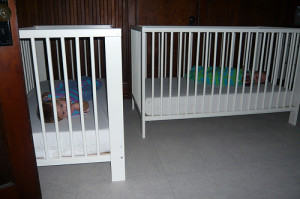
While the best way to help reduce the risks of SIDS is to follow those recommendations, some parents find it challenging to implement them. Parents of multiples may wonder what they can do to protect their babies. Our girls have always been in their own cribs because they spent so much time in the NICU separated that it was just easier to keep them that way. They do, however, often take naps together, though closely supervised. We prepared two cribs and borrowed two bassinets, eliminating any worries about their sleep. Many parents either cannot separate their twins or prefer them together. In such cases, place the babies in the crib head to head. However, once the babies start rolling over and moving around the crib (usually around three to six months), they should be separated.
What I Learned from My NICU Nurse
A story that I heard from one of the nurses in the NICU urged me to keep the twins separated. This nurse had grown-up twins, and she told me that she had her girls sleeping together. Once, after feeding one of the girls, she placed her back in the crib with her sleeping sister and went to grab something. When she returned, the baby that had been sleeping had rooted to the smell of milk and had latched on to her sister’s mouth, preventing her from breathing. Her daughter’s mouth had already turned blue from lack of oxygen, and any longer, she may not have been responsive. Thankfully, both babies were fine, but this was a lesson, even for a well-trained nurse, that accidents do happen.
It is important to remember why the guidelines are there; these are proven methods of reducing the risk of SIDS. Families need to evaluate their risks and make decisions based on what works best for them while keeping everyone safe. Unfortunately, it is often the case that everything is fine until it is not.
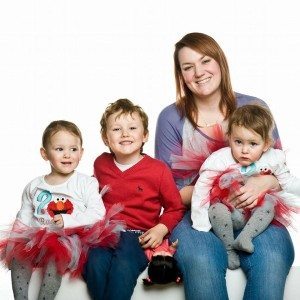
Alyssa Keel has worked as a social worker in both Canada and the U.S. for several years. Living in Toronto, Alyssa is a single mum to a rambunctious four-year- old boy and amazing two-year-old identical twin girls, one of whom has Cerebral Palsy. During her high risk mono-mono twin pregnancy, Alyssa began blogging, an extension of her love of writing. Alyssa loves taking photos and impromptu dance parties with her kids. Follow Alyssa and her family’s adventures at Adventures With Multiples.

